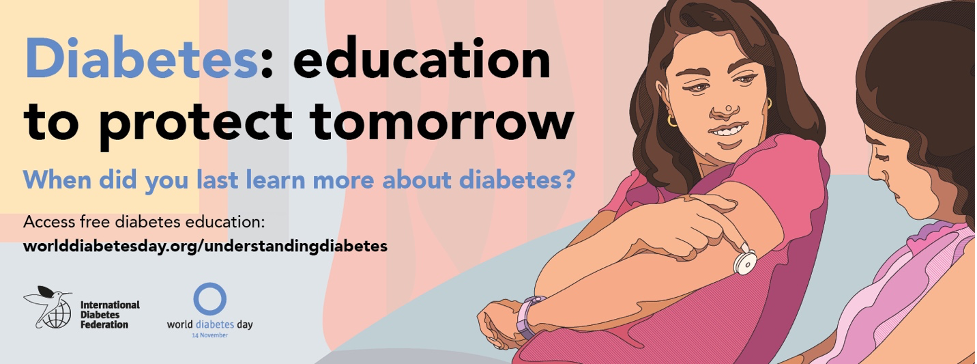World Diabetes Day 2022 – Get educated!

Diabetes affects more than half a billion people worldwide, but nearly one-half of them don't know that they have the condition. At the same time, people living with diabetes look after their own care more than 95 percent of the time, so they need to understand their condition, how to manage it, and keep their knowledge updated.
To fill that need, and to mark World Diabetes Day 2022 (14 November), the International Diabetes Federation (IDF) launched a new online platform that provides free interactive courses to help people with diabetes, and those who care for them, understand and manage their condition.
The theme for World Diabetes Day 2021-23 is access to diabetes care. In 2022, the campaign focuses on the need for better access to quality diabetes education.
Free online courses to understand diabetes
The Understanding Diabetes platform features free interactive courses on various aspects of diabetes care and management.
The first course – An Introduction to Diabetes – explains how the condition develops in the body, describes the main types, and explores the warning signs, risk factors and complications. The second course – The basics of blood glucose control – looks at the importance of keeping blood glucose levels in the target range when possible to help prevent or delay long-term complications of diabetes.
IDF’s School of Diabetes also offers online courses to help healthcare professionals keep up-to-date with diabetes management and treatment.
Diabetes is a chronic disease that occurs when the pancreas is no longer able to make insulin, or when the body cannot make good use of the insulin it produces. Diabetes is now among the top 10 causes of death worldwide – deaths from diabetes have increased by 70 percent since 2000.
At present, type 1 diabetes cannot be prevented. While a number of factors influence the development of type 2 diabetes, the most influential are lifestyle behaviours commonly associated with urbanisation. These include consumption of unhealthy foods and inactive lifestyles with sedentary behaviour. Diabetes risk is also affected by socio-economic status – groups with less income tend to have more diabetes. This is true within countries, and between them.
Low-mid income countries most affected
The number of people living with diabetes globally is predicted to rise from about 537 million adults today to 643 million and 784 million adults by 2030 and 2045. The large majority of these people will live in low- and middle-income countries.
Access to up-to-date information is not the only gap facing people living with diabetes. Insulin to treat diabetes was developed 100 years ago – yet half of the people who need this life-saving medicine do not have access to it. This challenge is more severe in low- and middle-income countries. For example:
- In Africa, 86 percent of people with type 2 diabetes are unable to access the insulin they need;
- 63 percent of households in low-income countries are unable to afford insulin, compared with 2.8 percent of households in high-income countries;
- 26.9 percent of households in low-income countries, and 0.7 percent of households in high-income countries, cannot afford the diabetes medication Metformin.
The rising number of people affected by diabetes is putting added strain on healthcare systems. Diabetes-related health costs now account for roughly 11.5 percent of the total global healthcare budget. As 784 million people (1 in 8) are projected to have diabetes by 2045, it is essential that more efforts are made to implement type 2 diabetes prevention plans and to introduce more cost-effective ways to manage the different types of diabetes.
It is also key that national essential healthcare packages include diabetes treatment so that poor people are not pushed further into poverty by being forced to pay medical expenses out-of-pocket.
